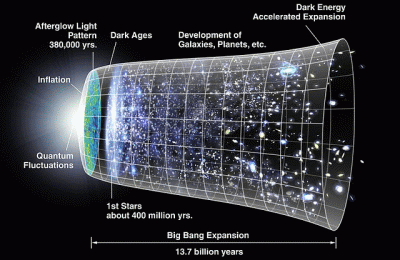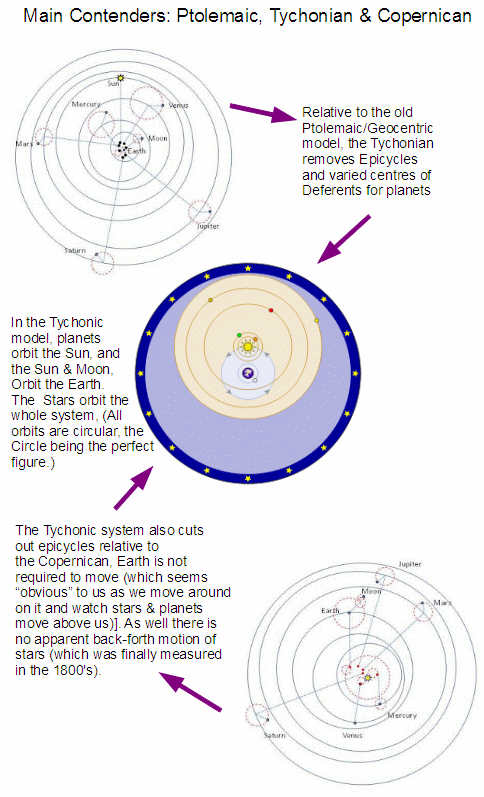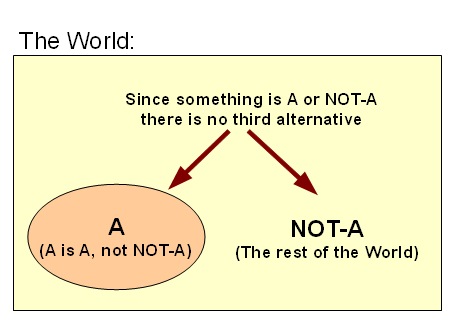Long-time visitors or regulars at UD will know that (along with StephenB who drew the significance to my attention . . . ) I champion the idea of self-evident, plumb-line first principles of right reason:
That is, if we contemplate say a bright red ball on a table, we see a world-partition:
W = { A | ~A }
. . . which leads to manifesting the classic laws of identity [A is A not non-A], non contradiction [(A AND ~A) = 0] , and excluded middle . . . this, best expressed as (A X-OR ~A) = 1.
 Likewise, I have argued for a weak-form principle of sufficient reason.
Likewise, I have argued for a weak-form principle of sufficient reason.
Contemplating that ball on the table, it is natural to ask, how it is there, hoping to make sense of its existence. Thence, we can apply:
W-PSR: For each entity A, we may freely ask and inquire as to why A is, seeking an answer.
Obviously, we may simply set out on the inquiry so this is undeniably self-evident.
It does not declare a view as to what we will find, but it is patent that we find entities that are contingent, and others that are necessary, of possible beings. Where, there are also candidate beings such as a square circle that — due to contradiction of core, defining characteristics — cannot be realised.
Such are impossible beings:

sense and place at the same time, i.e. a square circle is impossible
Contingent beings, of course, depend for origin and/or continued existence on the presence of enabling, on/off factors . . . formally termed necessary causal factors. A fire is a good illustration as each of heat, fuel, oxidiser and an unimpaired chain reaction are necessary for it to begin or be sustained. Indeed in such a case there must be a sufficient cluster of causal factors, and such will include at least all necessary, enabling, on/off ones that contribute to its existence:
By contrast, there are possible beings that have no dependence on such factors and so will exist in any possible state of affairs or world. The truth stated in 2 + 3 = 5 is such a case. It never began, it cannot cease, there are no circumstances on which it will not hold. That is, necessary beings are real, and highly relevant, including numbers, necessarily true propositions and more. Where of course, the Eternal God is a serious candidate to be such (by sharp contrast with flying spaghetti monsters, unicorns or perfect tropical islands etc).
So, contrary to common dismissive views, we do have grounds for accepting first principles of reason and to ponder issues of possible vs impossible being and contingent vs necessary being. Where also, a genuine nothing . . . non-being . . . can have no causal powers so if ever there had been an utter nothing, that would forever obtain.
A direct implication is, that if something — a common world:

. . . now is, something always was; a necessary being.
(The debates in and around UD on origins, in the end, are about what that necessary being is. Where, given the strong evidence for the finitely remote origin of the only actually observed cosmos, we have excellent reason to see it had a beginning and so is contingent and caused. With the demise of the steady-state universe model, we have had to face implications of a cosmos with a beginning.)
Now, in this context, I need to make a strong emphasis, regarding Occam’s razor (OR):
Occam’s Razor is NOT a first principle of right reason, but instead is a heuristic for economy in reasoning for finite, fallible minds forced to decide and act on best available and accessible limited and costly information, through bounded rationality, with possibility of error.
In a world besotted with scientism, it will help to show this by concrete example.
So, let us ponder models of the solar system c. 1600:
 As I noted in my remarks in the caption at IOSE:
As I noted in my remarks in the caption at IOSE:
The three main contenders c. 1600, and how the situation would have looked to Tycho Brahe. (NB: This is a case where the “simplest” model and one that fitted evidence available at the time, was wrong. An improved, simplified version of a more complex model turned out to be correct. Though, final direct empirical support in key cases took until the 1800’s.) Brahe hired Kepler to carry out mathematics to sort out the orbit of Mars, and in the course of his labours to sort it out, Kepler concluded that (I:) planets — including the Earth — orbit the Sun in elliptical orbits with the sun at one focus. (II:) The speeds of moving planets vary so that the line from the Sun to a given planet sweeps equal areas in equal times, and (III:) the square of orbital period of planets varies as the cube of the semi-major axis of the orbital ellipses. (NB: This actually PROMOTED Earth into the heavens!) Newton later showed that Kepler’s laws are consequences of universal gravitation, where F = G* Mm/r^2.
That is, it is demonstrably not always true that the “simplest” — itself a slippery notion — model or explanation will turn out correct or closest to correct.
Instead, we would be well advised to seek balanced models which address relevant factors economically and exhibit empirical reliability. Where, the fundamental underlying model is the form of induction that can be termed abductive inference to best current explanation in light of (a) factual adequacy, (b) coherence, and (c) powerful explanatory elegance that is at the balance point between being an ad hoc patchwork and overly simplistic.
One more point.
Given that this blog addresses Origins Science issues in the midst of a hot controversy, we must emphasise the vera causa principle:
VCP: serious candidate causal explanations for remote reaches of space or the unobservable past (recent or deep) should only consider as serious candidates those factors or clusters of factors that are observed to have adequate capacity to cause effects materially similar to traces of the unobservable reaches of space and time.
Newton championed much the same in his four principles of reason, as a basis for reasoning on matters astronomical, and Lyell and Darwin hoped to apply such to geology and biology.
The sting in this, of course, is that FSCO/I is a common phenomenon, and this includes the world of life. But, to the infuriation of many critics of design thought, it has exactly one commonly observed source: not blind chance and/or mechanical necessity, but intelligently directed configuration, aka design. And like unto it, fine tuned co-adaptation of components or facets of an entity that enable interactive functionality also has just the same only observed source.
And so, we see that — contrary to how it is often put forward — Occam’s Razor is not a foundational principle of reasoning, and needs to be counter-balanced by genuine first principles of reason and considerations of inference to best current explanation in light of strengths and weaknesses of serious candidate models. END
PS: It will probably help to look at Science as an ideal of praxis, from a design perspective in light of concerns over Origins Science:
. . . let us give a “rough working definition” of science as it should be (recognising that we will often fall short):
science, at its best, is the unfettered — but ethically and intellectually responsible — progressive, observational evidence-led pursuit of the truth about our world (i.e. an accurate and reliable description and explanation of it), based on:
a: collecting, recording, indexing, collating and reporting accurate, reliable (and where feasible, repeatable) empirical — real-world, on the ground — observations and measurements,
b: inference to best current — thus, always provisional — abductive explanation of the observed facts,
c: thus producing hypotheses, laws, theories and models, using logical-mathematical analysis, intuition and creative, rational imagination [[including Einstein’s favourite gedankenexperiment, i.e thought experiments],
d: continual empirical testing through further experiments, observations and measurement; and,
e: uncensored but mutually respectful discussion on the merits of fact, alternative assumptions and logic among the informed. (And, especially in wide-ranging areas that cut across traditional dividing lines between fields of study, or on controversial subjects, “the informed” is not to be confused with the eminent members of the guild of scholars and their publicists or popularisers who dominate a particular field at any given time.)
As a result, science enables us to ever more effectively (albeit provisionally) describe, explain, understand, predict and influence or control objects, phenomena and processes in our world.

